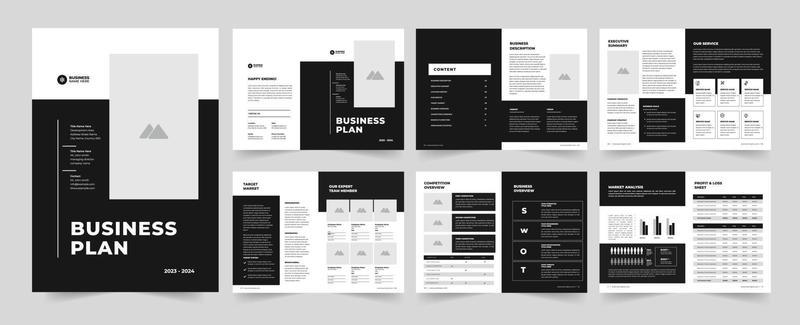Drafting a business plan is a crucial step for any aspiring entrepreneur. It’s a formal document that outlines your business goals, how you plan to achieve them, and the financial and operational details of your company. Think of it as a roadmap for your business. Here’s a breakdown of the key components you should include when drafting one.
1. Executive Summary
This is the most important part of your business plan. Although it appears first, you should write it last. The executive summary provides a high-level overview of your entire plan, summarizing all the key sections. It should capture the reader’s attention and make them want to read the rest of the document.
What to include:
- Business Concept: What is your business and what problem does it solve?
- Mission and Vision: What’s the purpose of your company and where do you see it in the future?
- Target Market: Who are your customers?
- Competitive Advantage: What makes you unique?
- Financial Highlights: A brief summary of your funding needs and financial projections.
2. Company Description
This section provides a detailed overview of your company. It should explain what your business does, its legal structure, and its history. This is where you can elaborate on the information presented in the executive summary.
What to include:
- Legal Structure: Are you a sole proprietorship, partnership, LLC, or corporation?
- Company History: When was the company founded, and what milestones have you achieved?
- Mission Statement: A more detailed explanation of your company’s purpose and values.
- Team and Management: A brief overview of your key personnel and their expertise.
3. Market Analysis
To succeed, you need to understand the industry you’re entering and the customers you’re targeting. This section demonstrates that you have a deep understanding of your market.
What to include:
- Industry Overview: Provide an analysis of the industry’s size, trends, and growth potential.
- Target Market: Describe your ideal customer in detail, including their demographics, needs, and buying habits.
- Competitive Analysis: Identify your main competitors and analyze their strengths and weaknesses. What are they doing well, and where can you gain a competitive edge?
- SWOT Analysis: A simple but powerful tool to evaluate your business’s Strengths, Weaknesses, Opportunities, and Threats.
4. Organization and Management
This section outlines your company’s organizational structure and the people behind it. Investors want to see that you have a capable team with the skills and experience to execute the plan.
What to include:
- Organizational Chart: A visual representation of your company’s structure.
- Management Team: A brief biography of each key team member, highlighting their relevant experience and qualifications.
- Advisors and Consultants: List any advisors or board members who provide guidance to your company.
5. Service or Product Line
Here, you’ll describe what you’re selling. Focus on the benefits and value your product or service offers to the customer, not just its features.
What to include:
- Description: A detailed explanation of your product or service.
- Life Cycle: Where is your product in its life cycle (e.g., development, growth, maturity)?
- Intellectual Property: Do you have any patents, trademarks, or copyrights?
- Pricing Strategy: How will you price your product or service?
6. Marketing and Sales Strategy
This section explains how you will attract customers and generate revenue. It should be a clear, actionable plan for reaching your target market.
What to include:
- Marketing Strategy: How will you promote your business? Will you use social media, content marketing, advertising, or public relations?
- Sales Strategy: How will you sell your product or service? Will you use an e-commerce platform, a physical store, or a sales team?
- Sales Funnel: Outline the steps a potential customer takes from initial contact to making a purchase.
7. Financial Projections
This is the numbers-driven section of your plan. It should be based on solid research and realistic assumptions. For a startup, this is a forecast of your company’s financial performance.
What to include:
- Startup Costs: A list of all initial expenses required to get your business off the ground.
- Income Statement: A forecast of your company’s revenue, expenses, and profit over a period of time (e.g., 3-5 years).
- Cash Flow Statement: A projection of the cash coming in and going out of your business. This is crucial for showing that your business can manage its daily operations.
- Balance Sheet: A summary of your company’s assets, liabilities, and equity.
- Funding Request: If you are seeking funding, this section should detail how much you need, what it will be used for, and the terms of the investment.
Final Tip: Review and Refine
Once you have drafted all the sections, review your business plan with a critical eye. Ensure it is coherent, well-organized, and free of grammatical errors. Have someone else read it to get a fresh perspective. Your business plan is a living document—you should revisit and update it as your business evolves.
Ready to turn your business idea into a concrete plan? Book your consultation today to get started today.

Leave a Reply